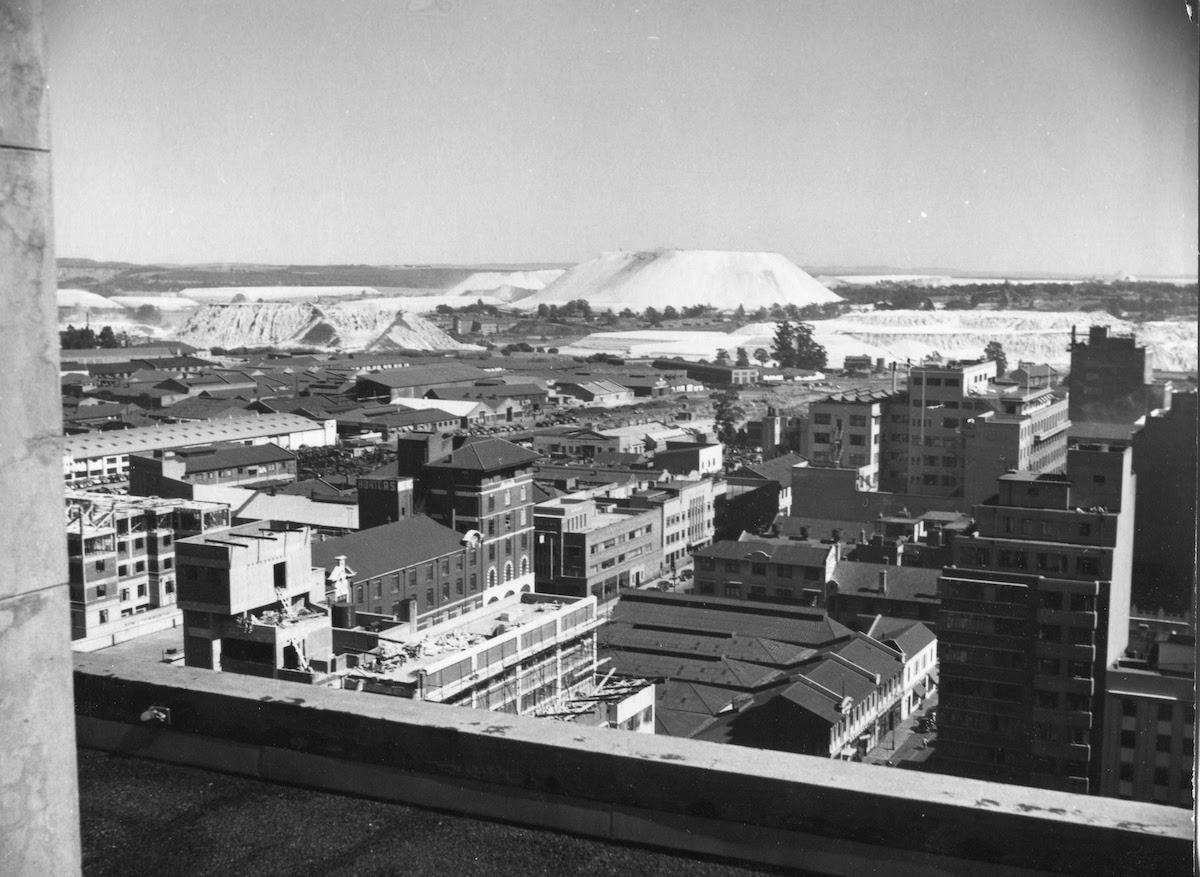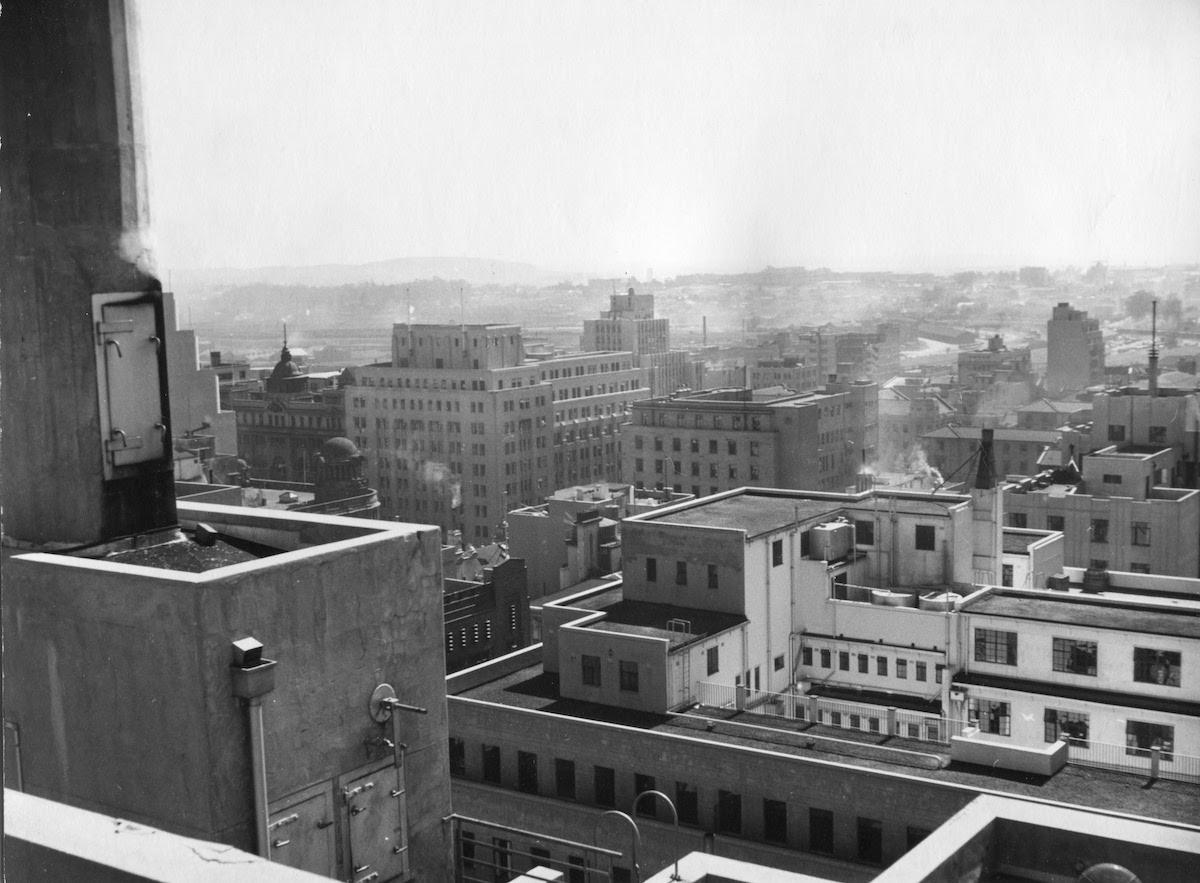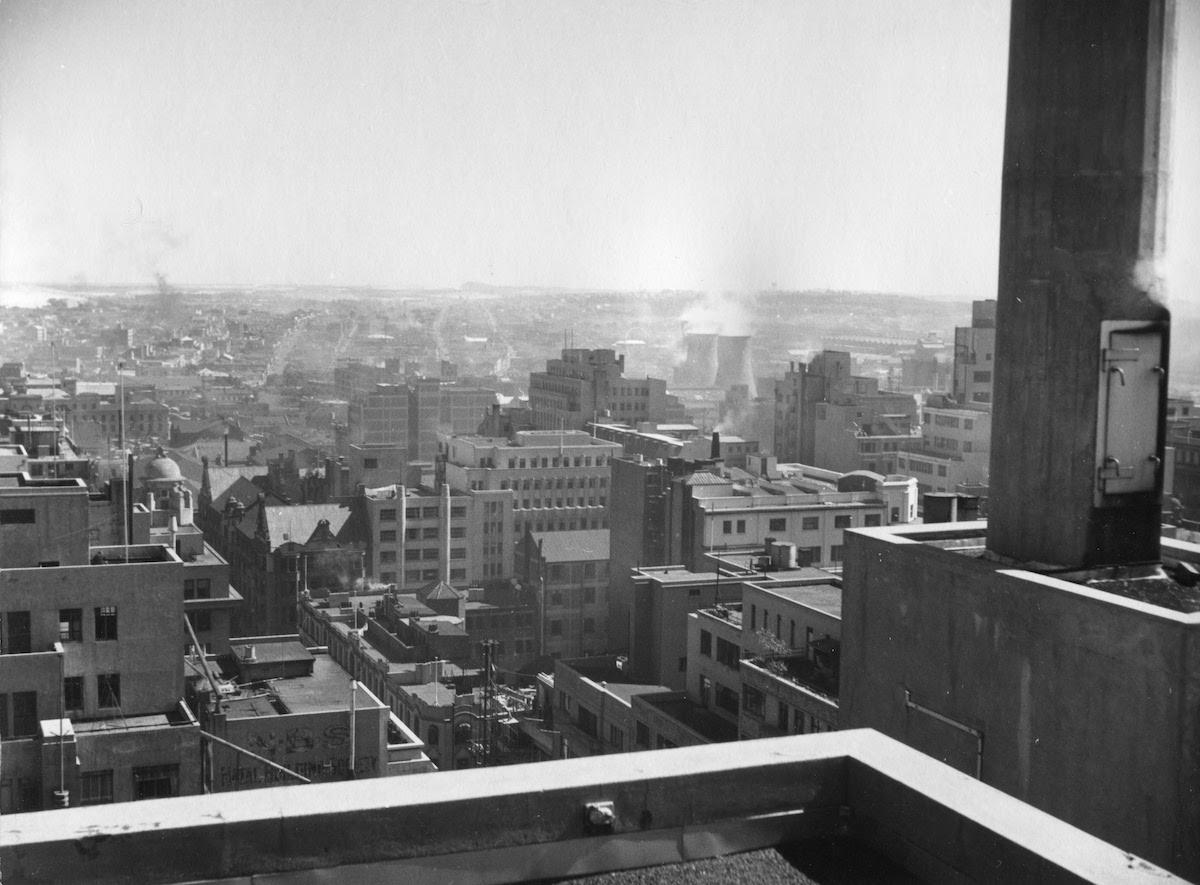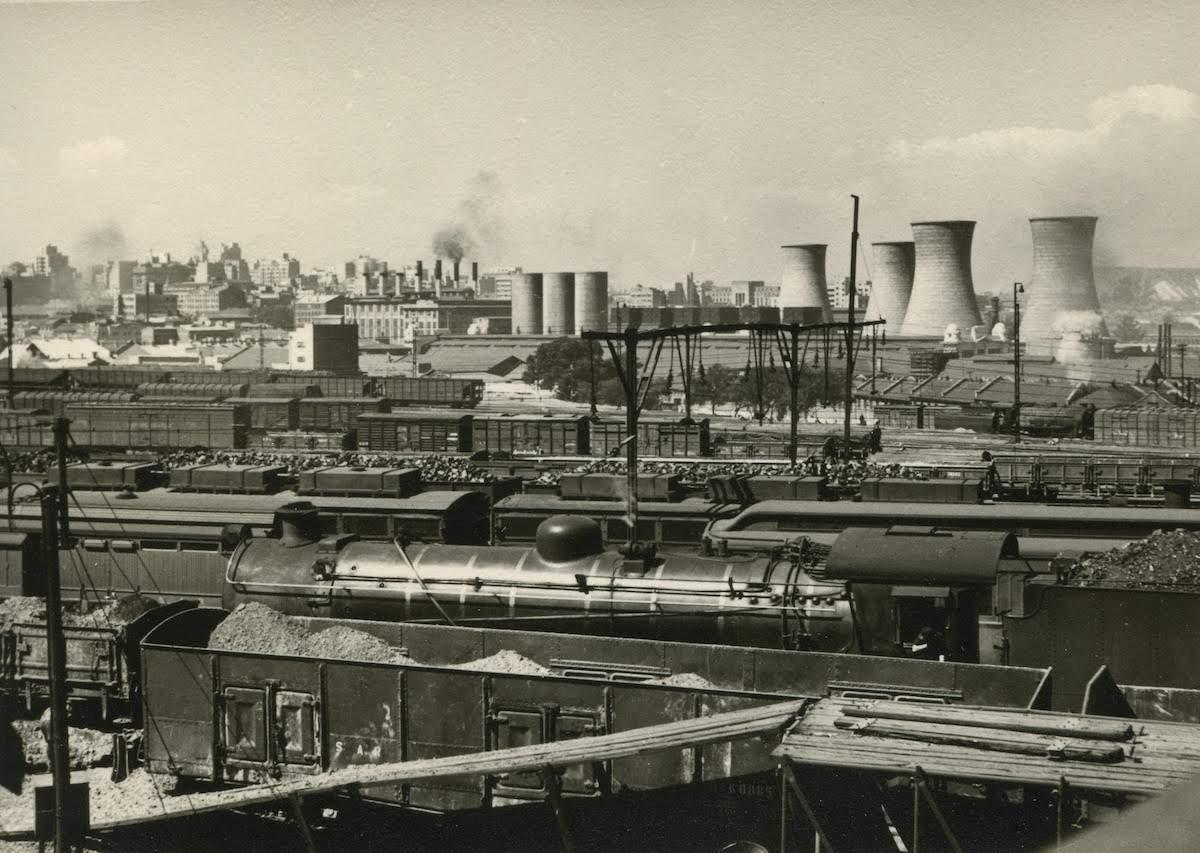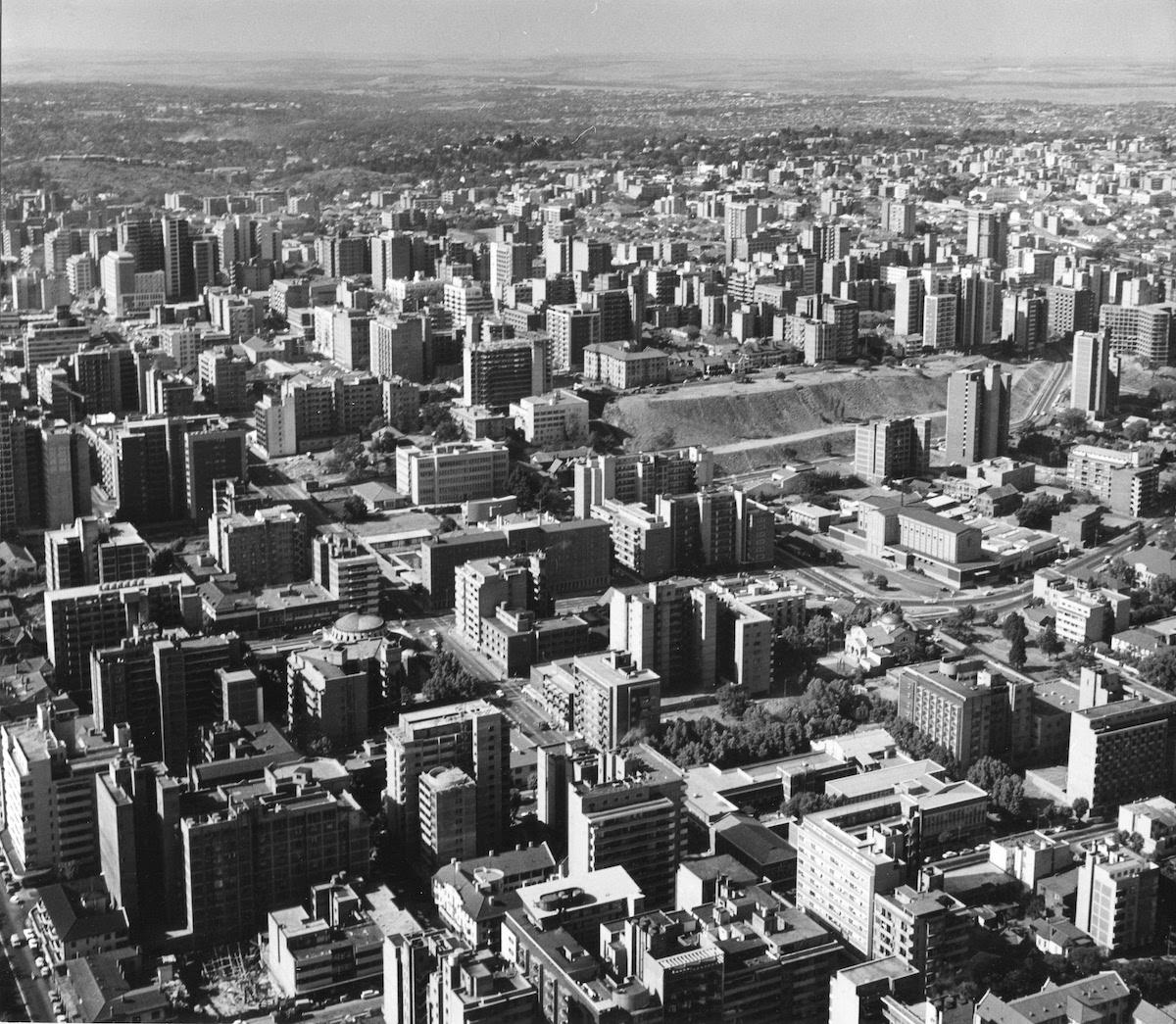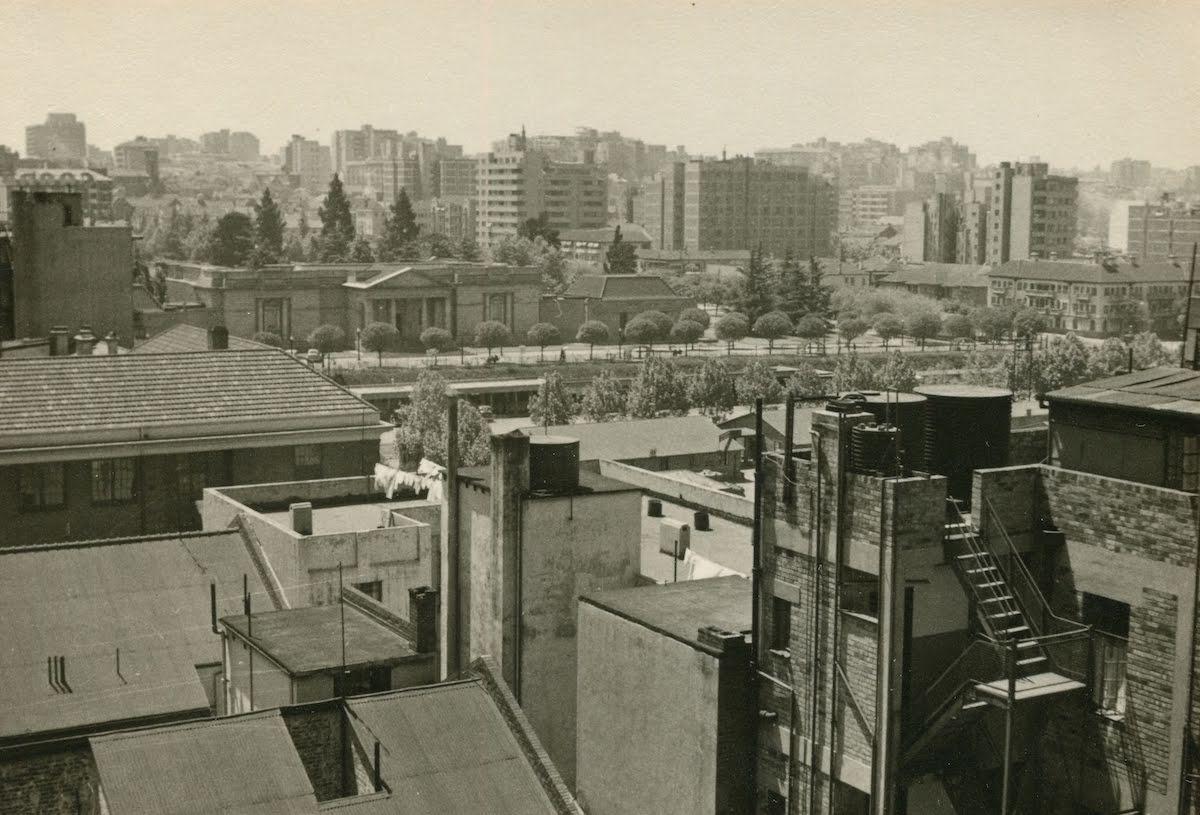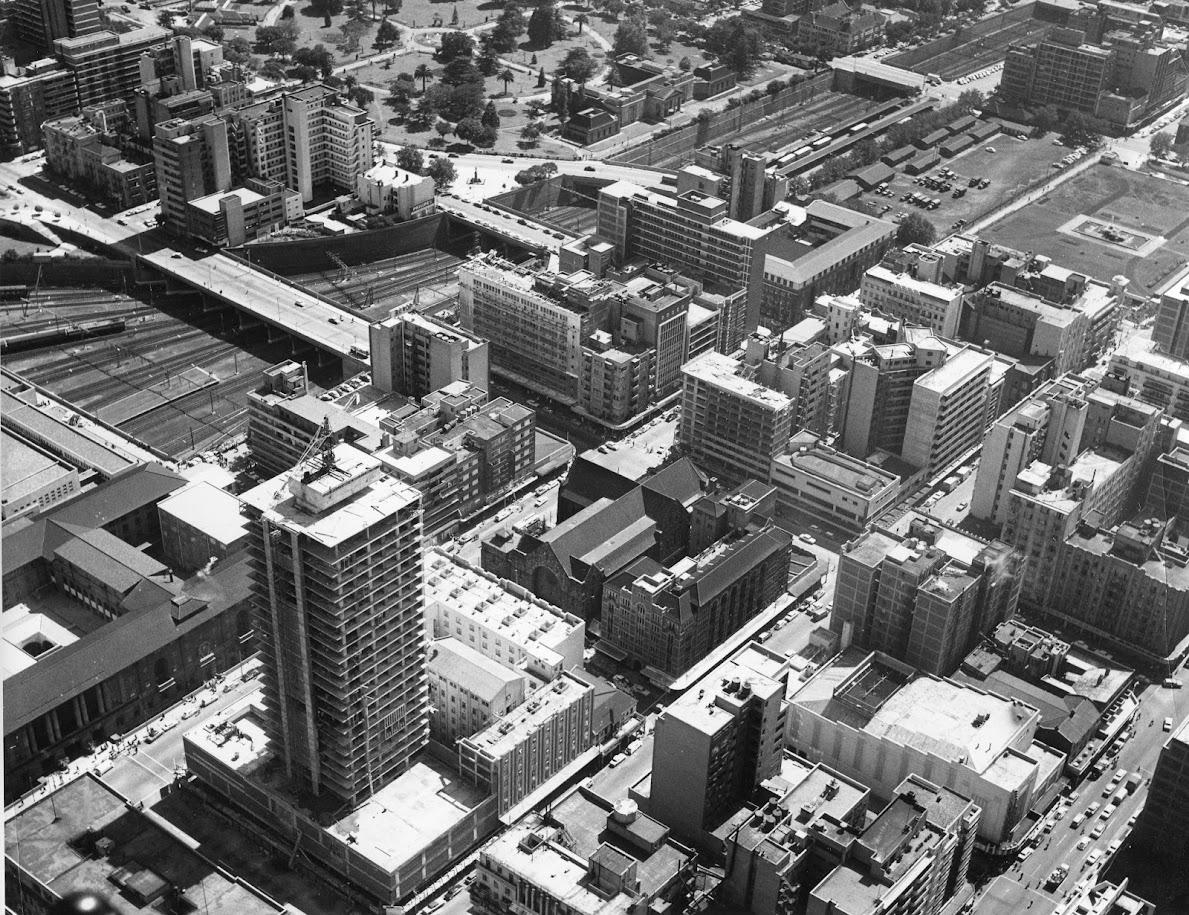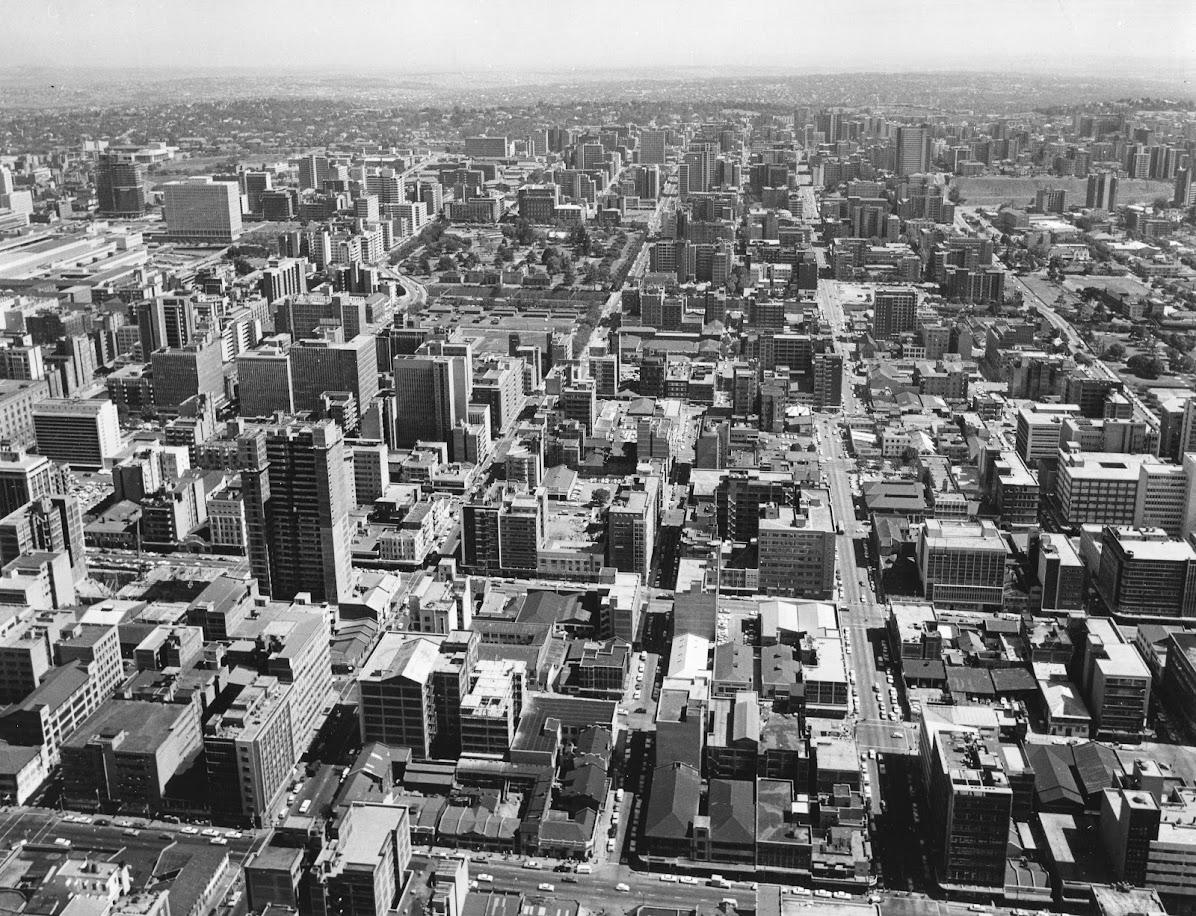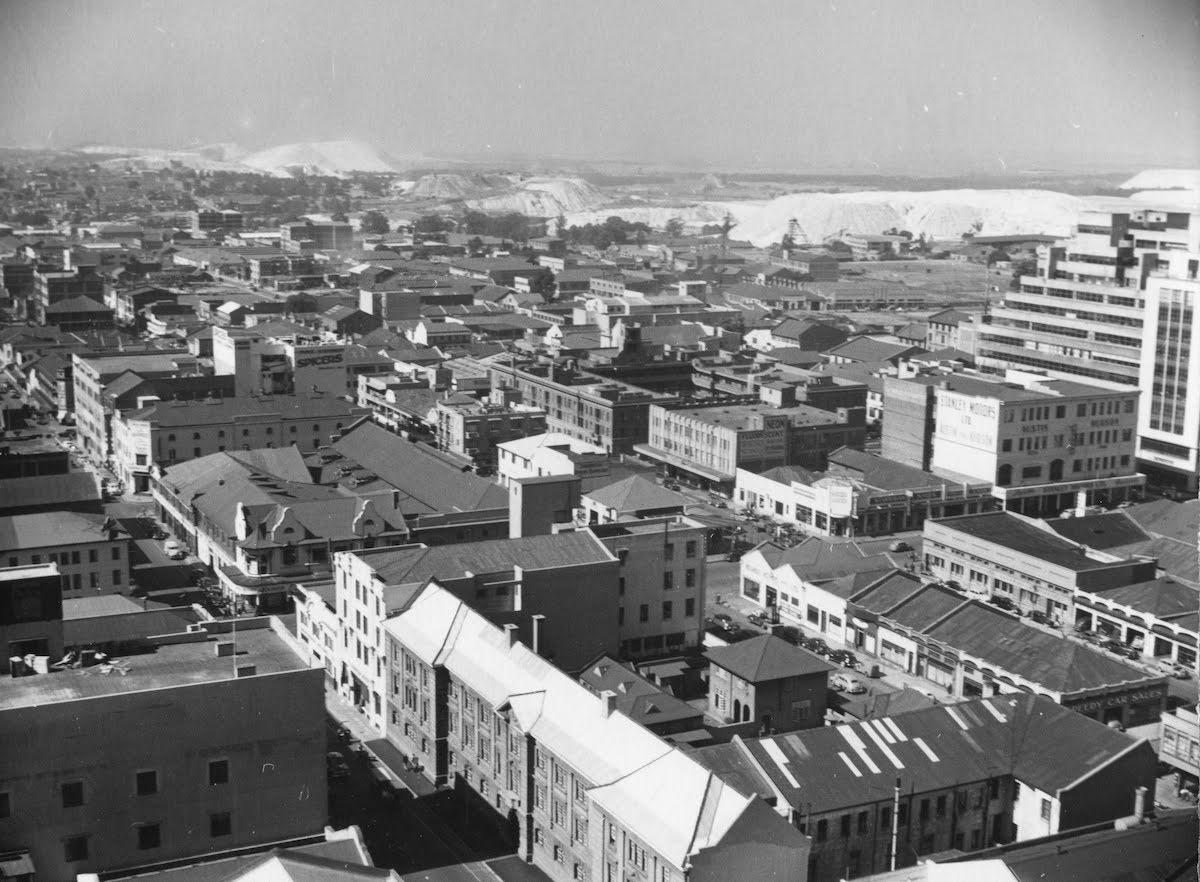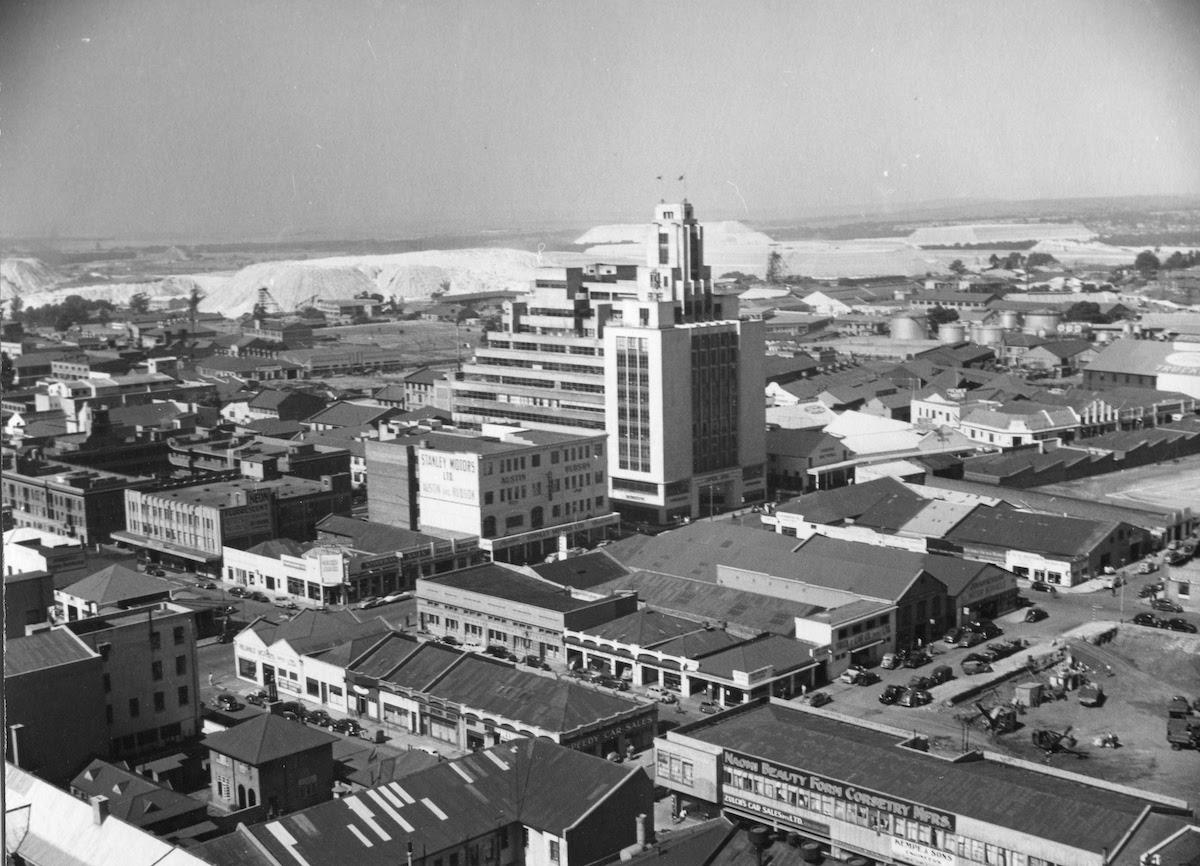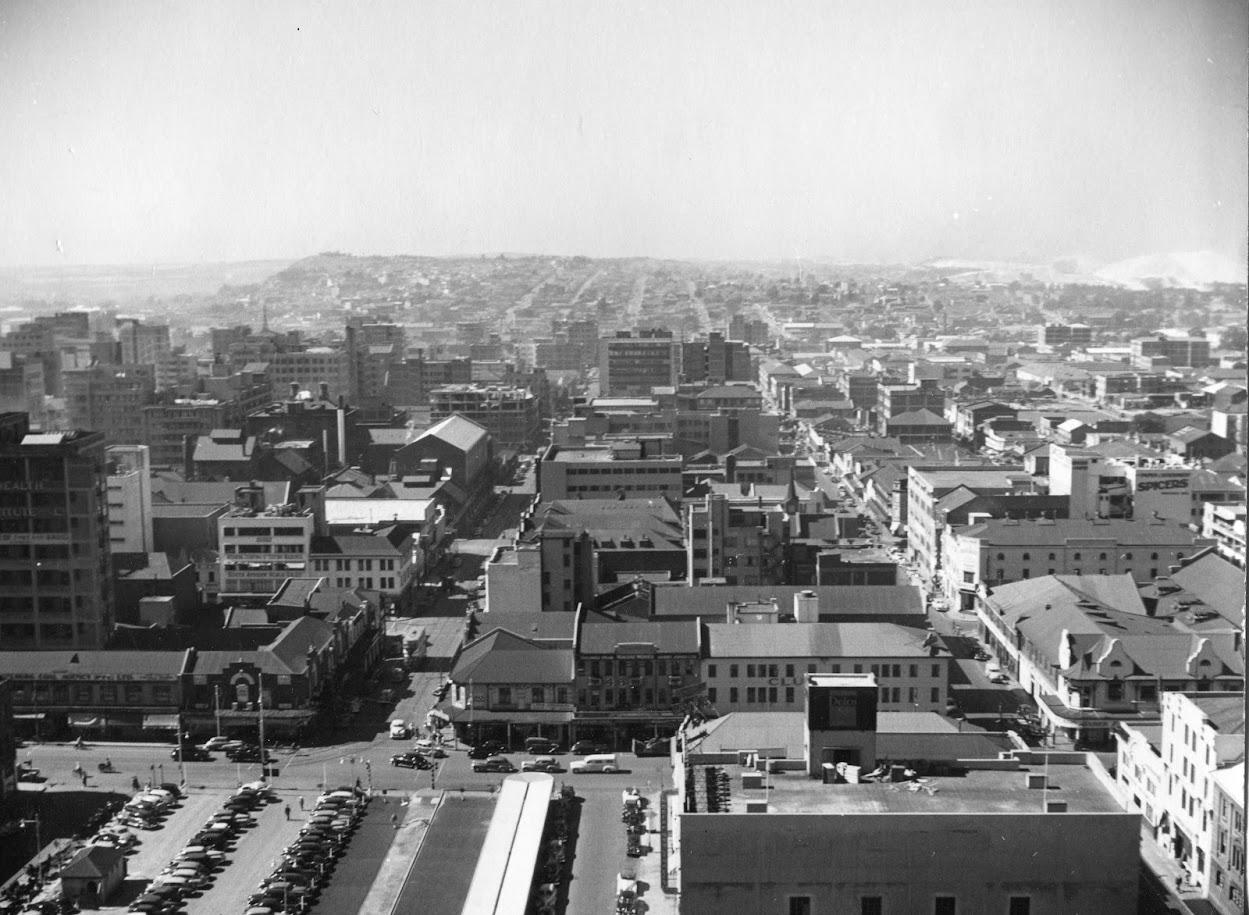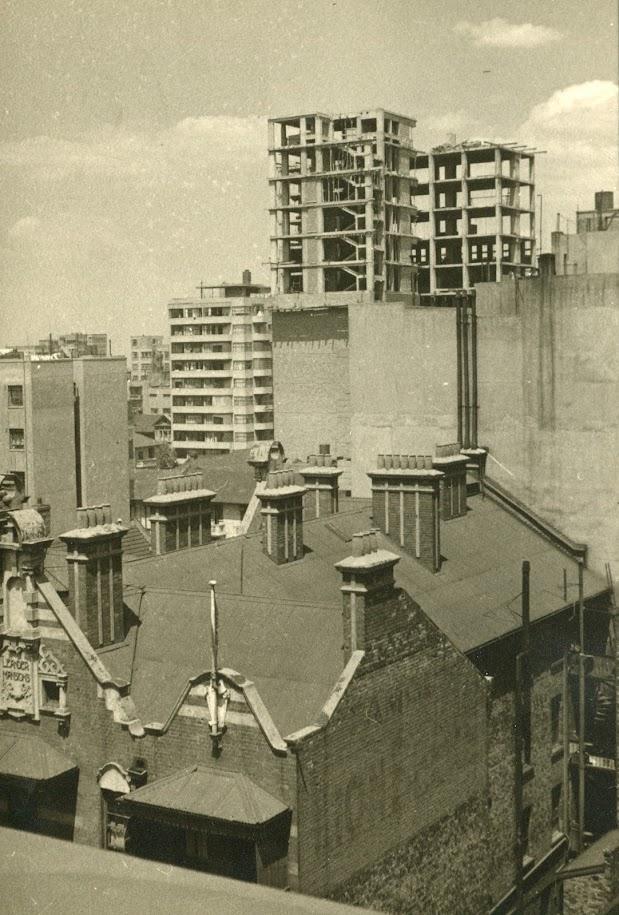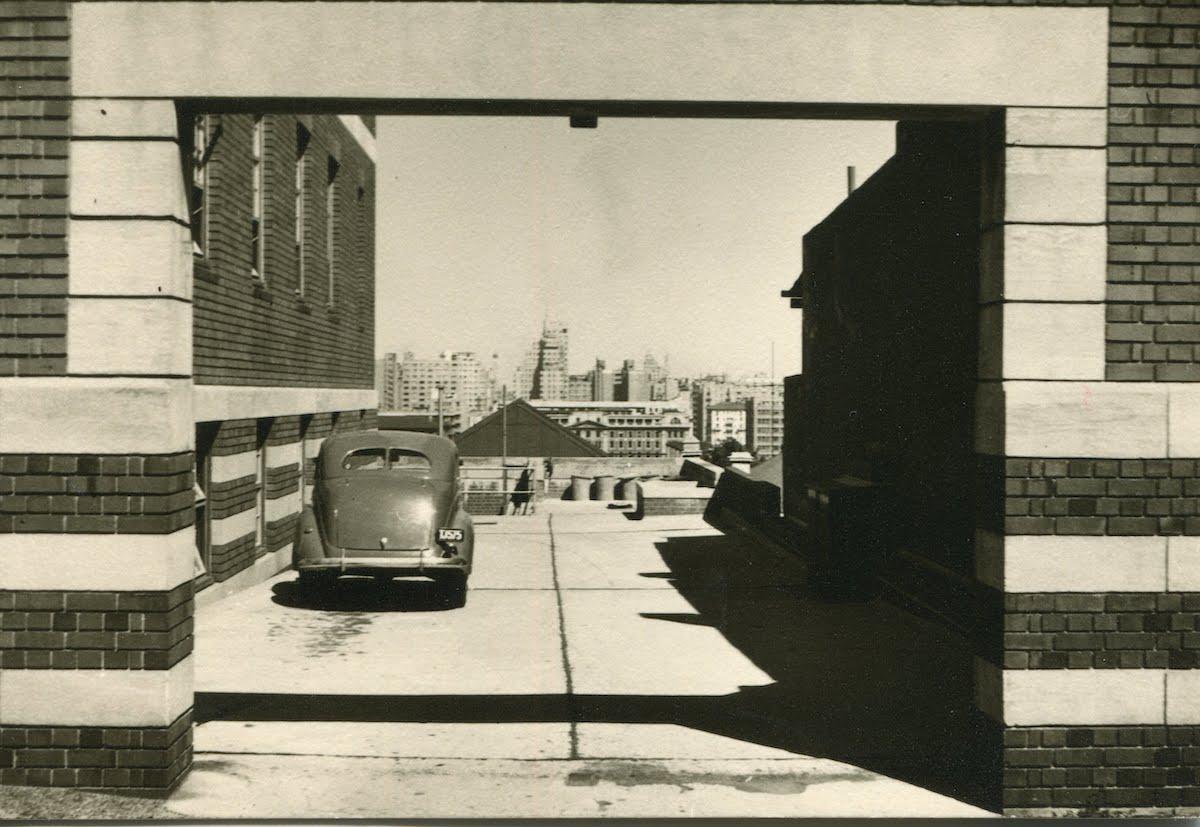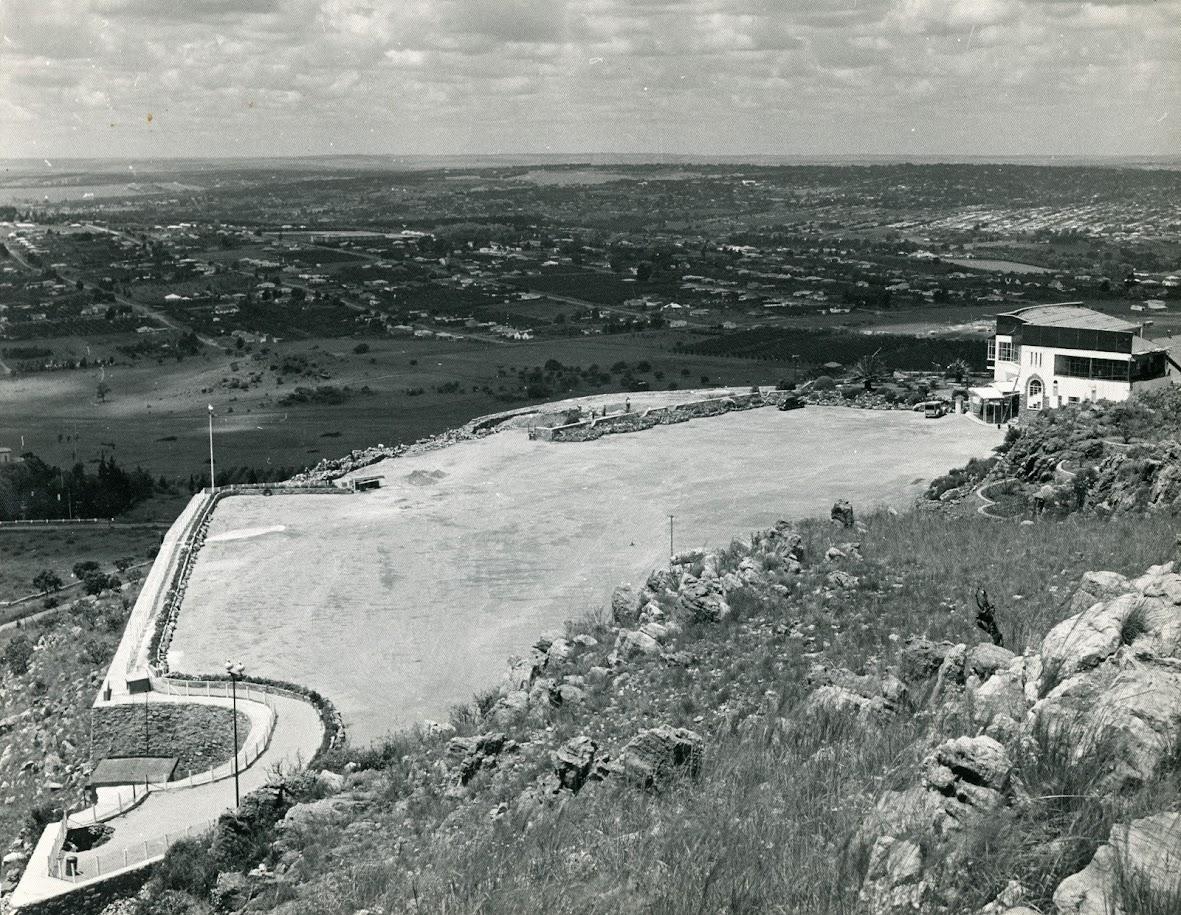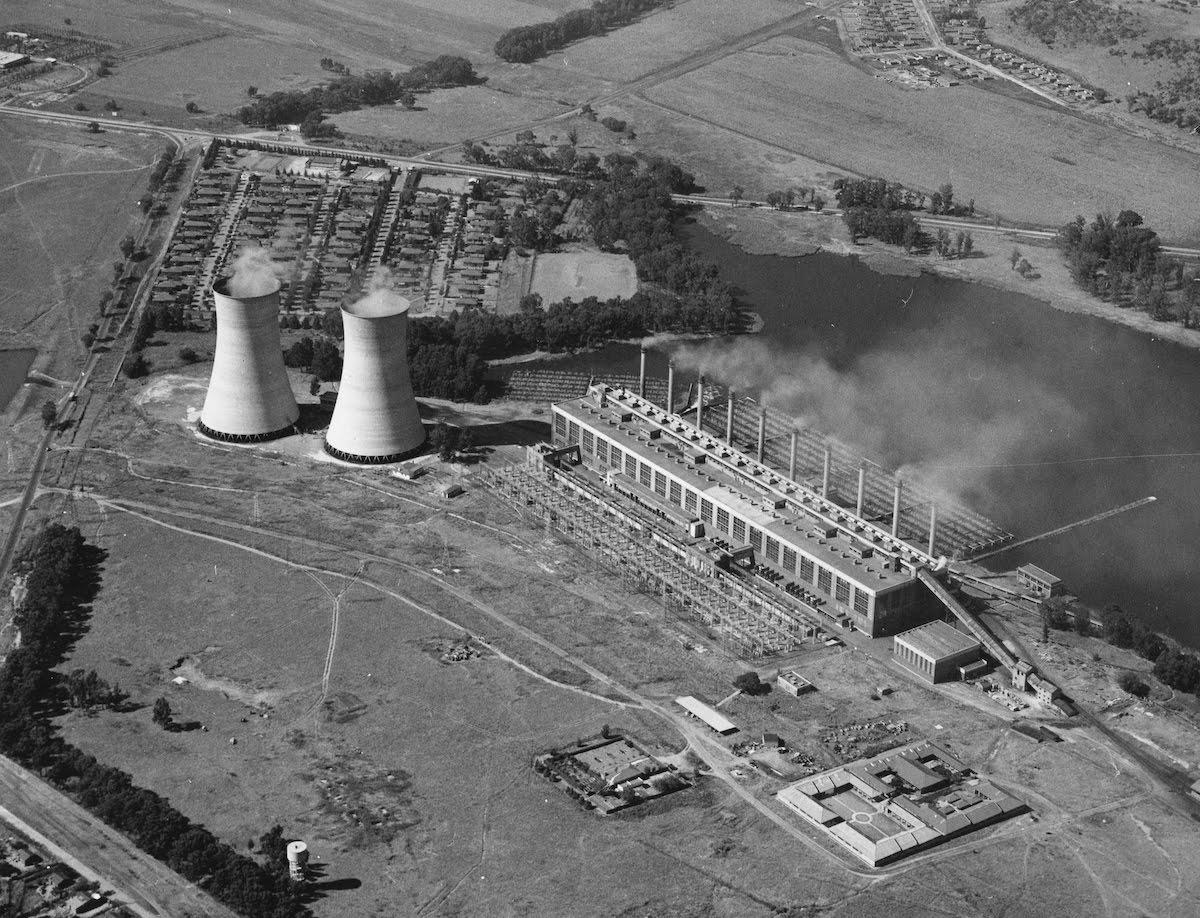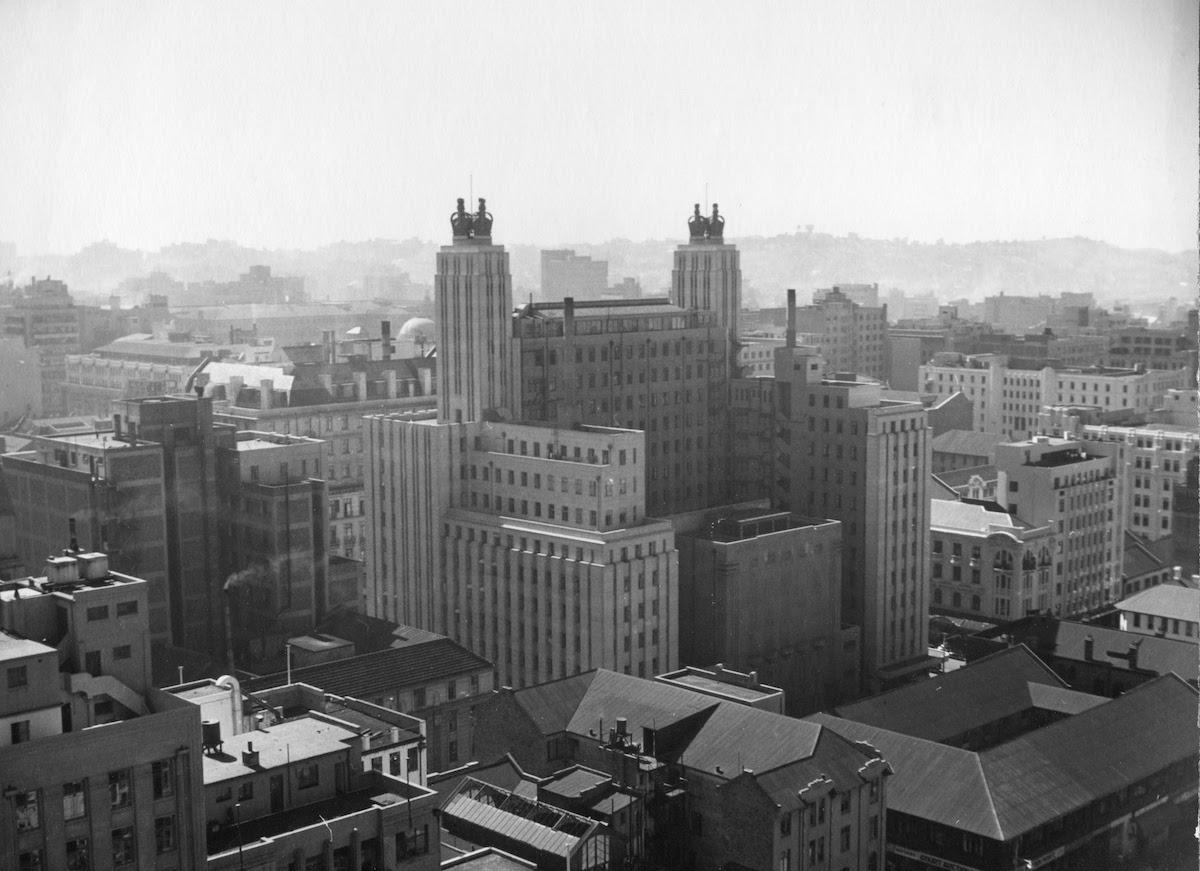
Disclaimer: Any views expressed by individuals and organisations are their own and do not in any way represent the views of The Heritage Portal. If you find any mistakes or historical inaccuracies, please contact the editor.
We are excited to share these wonderful photographs of Johannesburg from above. Many were taken from the rooftops of the city while others are from a plane. Most of the images were captured from the late 1940s to the 1960s. Thank you to the Bath Family for giving us access to their priceless archive (click here to read more about the archive).
The main image is a phenomenal shot of His Majesty's. The blue plaque for this building reads as follows:
African Consolidated Theatres commissioned J.C. Cook & Cowen to design a new theatre and office complex in 1937, to replace the theatre of the same name which had opened in 1903. Construction was interrupted by World War II and only completed in 1945. Decorated with the plushness befitting royalty, His Majesty’s Theatre became the venue for spectacular productions. The theatre occupied the central block between the office towers which were topped with steel crowns, lit up at night. Advocate Joe Slovo, a leading communist and later Chief of Staff of Umkonto we Sizwe in the Anti-Apartheid Struggle, had chambers in the office towers.
Look how close the mine dumps were to town. Many of Joburg's dumps have been reclaimed in recent decades. Click here for an article on the Portal about this process.
A view across Marshallstown. See if you can spot some iconic buildings like Standard Bank Chambers, Corner House and the SA Mutual Building.
View from a rooftop looking towards Newtown. The famous Cullinan Building is visible centre left.
Looking over the railway lines towards Newtown's famous cooling towers (now demolished)
A spectacular view towards Hillbrow. Look closely and you'll spot the Wolmarans Synagogue, the Cathedral of Christ the King and the Cathedral of Saints Constantine and Helen
Looking towards the Johannesburg Art Gallery and Joubert Park
If you scan this photograph closely you can see Park Station on the bottom left, St Mary's Cathedral below centre, the Drill Hill on the top right and the Johannesburg Art Gallery & Joubert Park in the middle at the top. The skyscraper in the foreground is the President Hotel.
Rich shot of Joburg buildings. You could spend hours digesting photographs like these. Joubert Park and the Johannesburg Art Gallery are centre left.
A view toward the south east. Iconic Chrysler House is on the far right with the Marshall Street Barracks in the foreground.
The magnificent Chrysler House built in the late 1930s. Lucille Davie transports us back in time: "In the 1940s, there was a motor town on the southern side of Eloff Street where those who wanted a dazzling new American car would go, to stroll through showroom after showroom. The Rolls Royce showroom was Chrysler House, taking up a whole block. The 2nd floor was the used-car department, the 3rd the spares department, the 4th quick service, the 5th the service and electrical workshops, the 6th the panel beating and mechanics’ dining room, parking was on the 7th and 8th floors, admin on the 8th, and staff recreation rooms and lounge on the 10th. The 11th and 12th floors were taken up with lift motor room and aircon plant, plus the caretaker’s flat. The narrow 13th, 14th and 15th tower contained tank rooms."
View across Johannesburg looking east
Building boom in Johannesburg in the 1950s with Leander Mansions in the foreground.
A portion of the Joburg skyline from a rooftop in the north. You can see Ansteys and Manners Mansions in the distance,
This image shows the old night club on top of Northcliff, a favourite dance venue of the rich and famous. It burned down in the mid 1950s. Linden is visible in the middle of the picture.
Construction on the Orlando Power Station began in the late 1930s. It came into operation in several stages through the Second World War and was expanded due to increased demand after the war. The structure collapsed in 2014.
Once again thank you to the Bath Family for giving us access to their archive. There will be several stories on these fascinating photographs. Click here to view.
Comments will load below. If for any reason none appear click here for some troubleshooting tips. If you would like to post a comment and need instructions click here.

